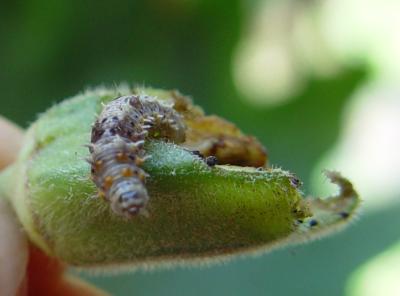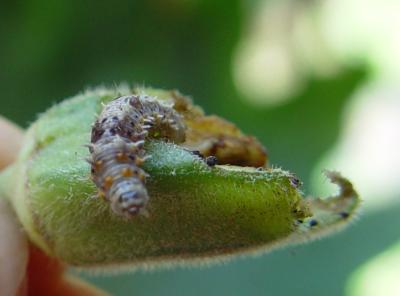

Spiny bollworm or spotted bollworm (Earias spp.)
It is a major pest of okra. The full grown larva is 13-18 mm long and 2.5 mm wide. It is stout and spindle shaped. The body colour is variable, ranging from greyish-brown, through grey to green, with a distinctly paler or white median line. The adult is a moth, about 12 mm long with a wingspan of about 20-22 mm. The forewings (front wings) are white, peach, metallic green to straw yellow in colour according to the species.
The larvae/caterpillars bore into terminal shoots of young plants, causing death of the tip and development of side shoots. When pod production starts, the caterpillars move to the flower buds, small pods and eventually mature pods. Damaged flower buds and young pods are shed, leading to yield reduction. Damaged pods ad pods contaminated with insect frass are not marketable. High doses of nitrogen fertilisers have been found to increase spiny bollworm infestation.
- Scout the crop regularly. Early detection of eggs and/or caterpillars before they bore into the pods is important.
- Conserve of natural enemies.
- Hand pick and destroy eggs and caterpillars, and damaged tips and pods (in small plots).
- Regulate fertilisation. Avoid high doses of nitrogen.
- Destroy old crops and crop debris after harvesting.
- Use biopesticides (e.g Bt, neem-based pesticides). Good spray coverage and targeting small caterpillars before they bore into the pods is very important.
For information on Bt click here. For information on Neem click here.
